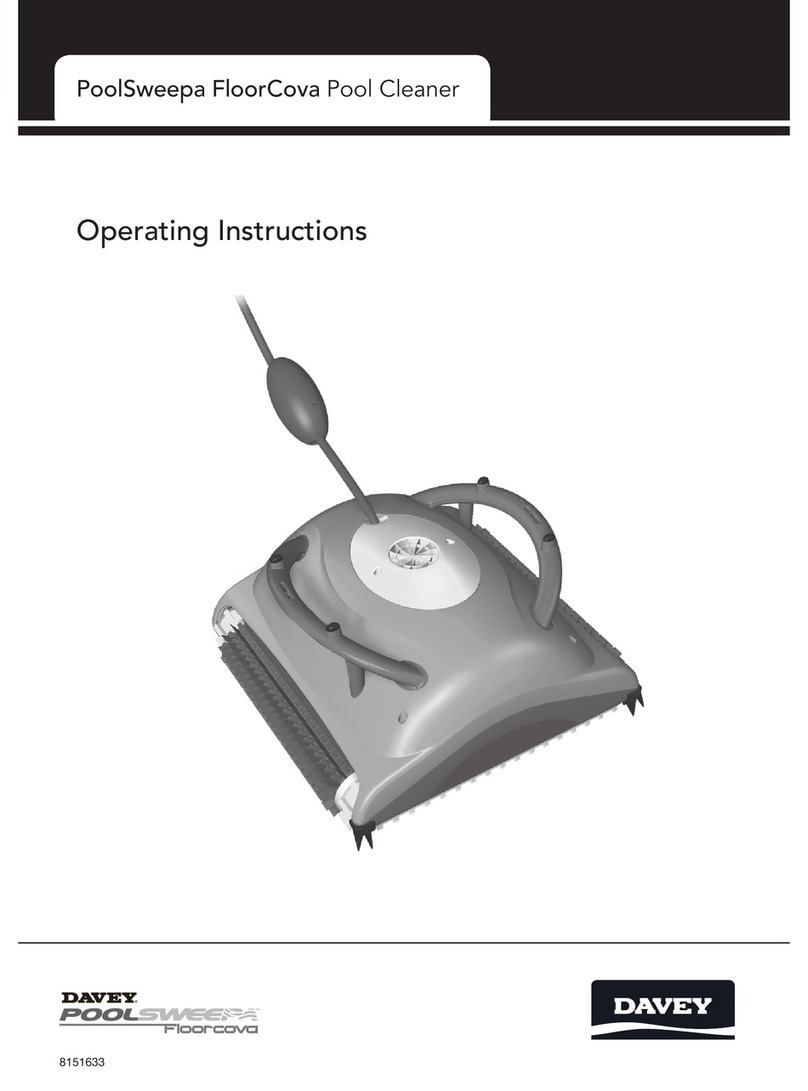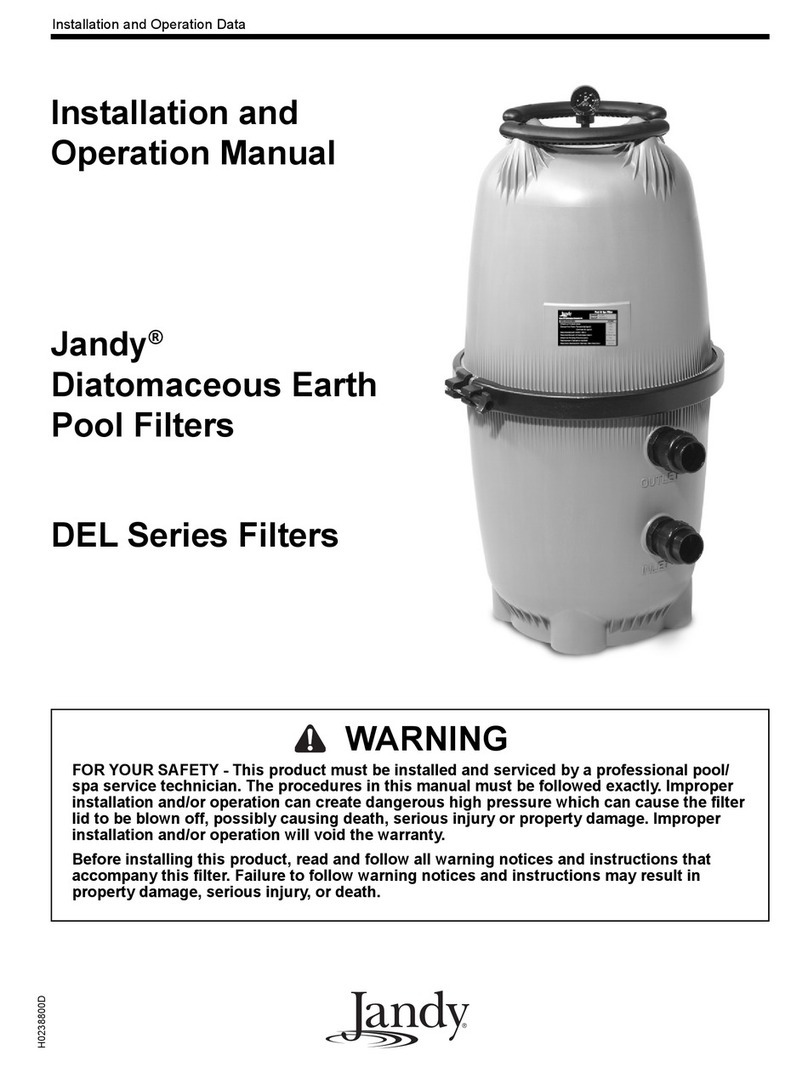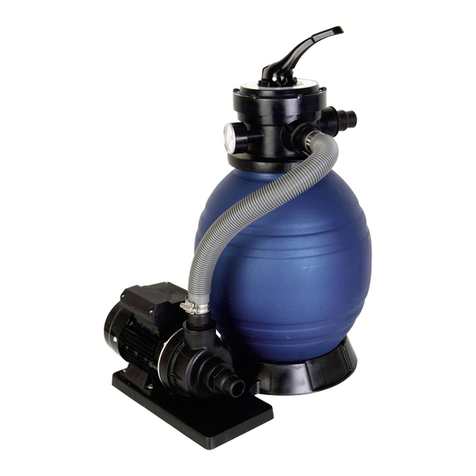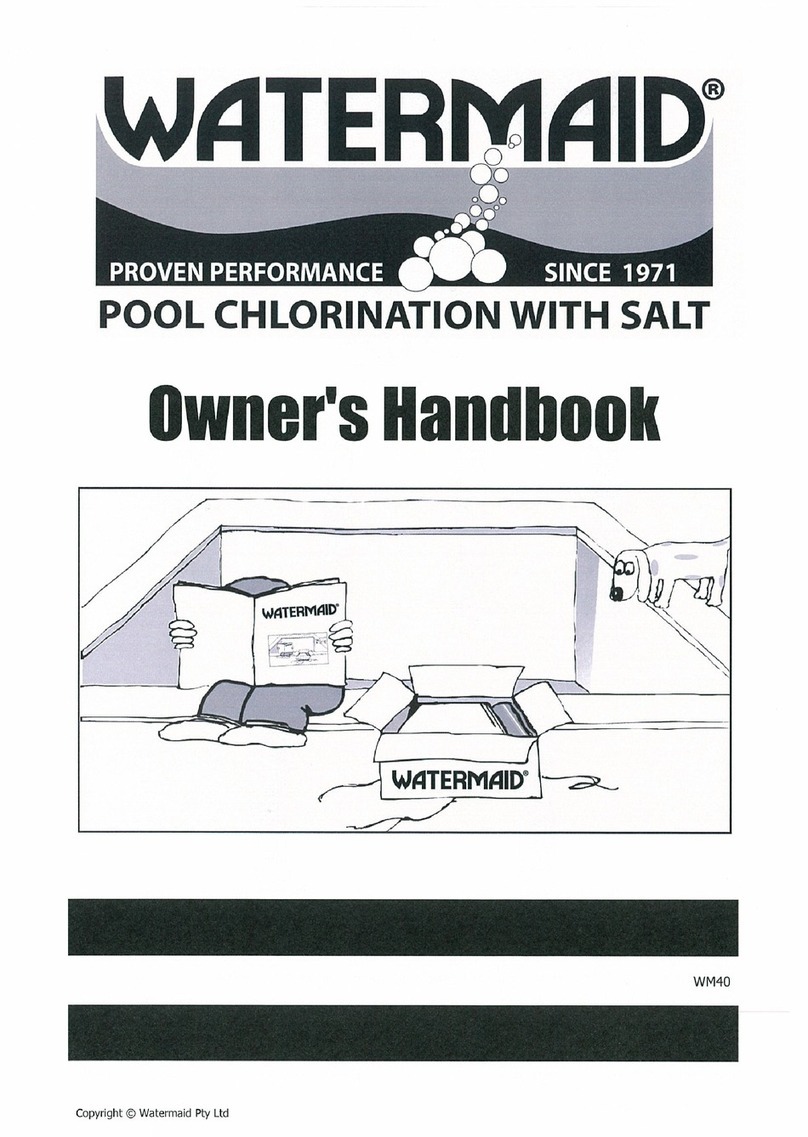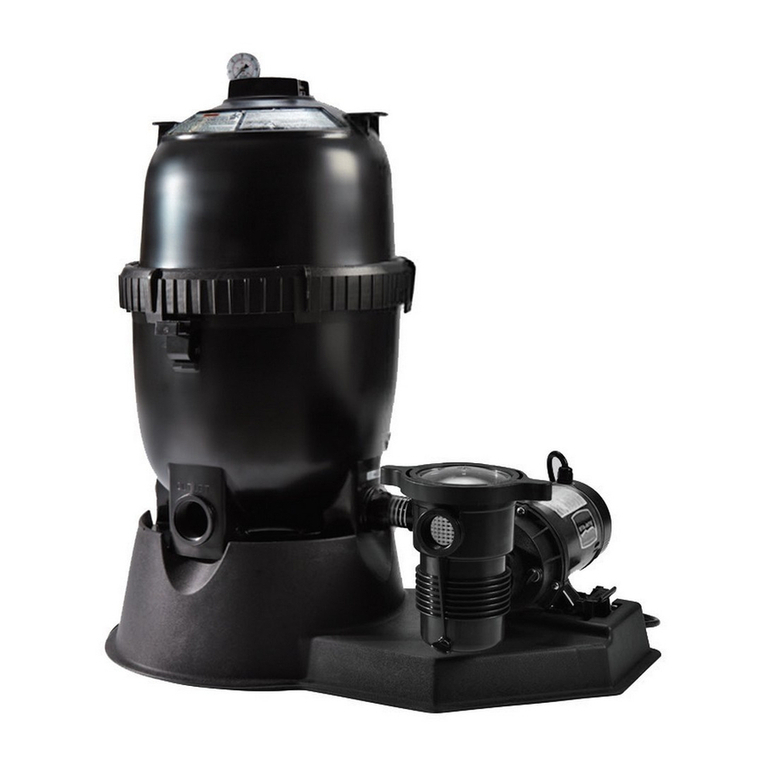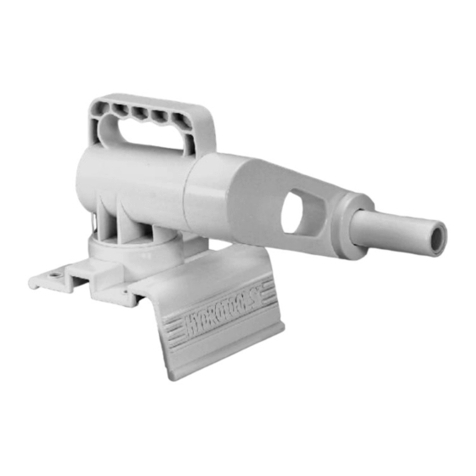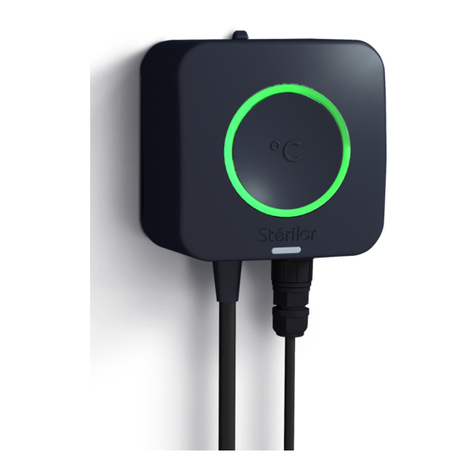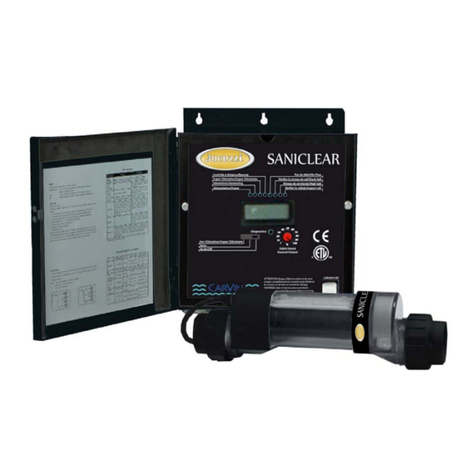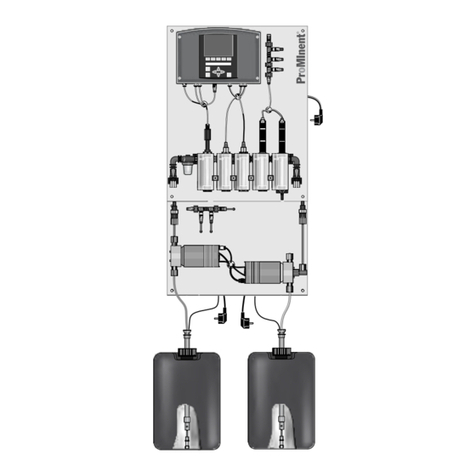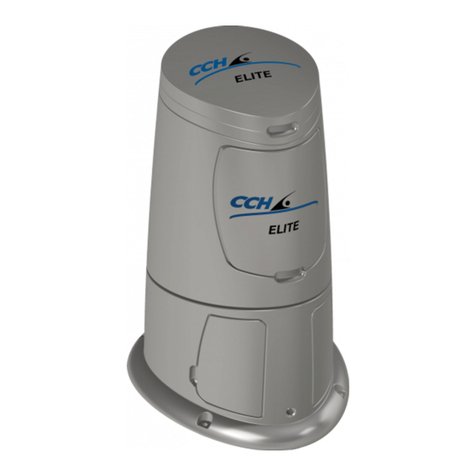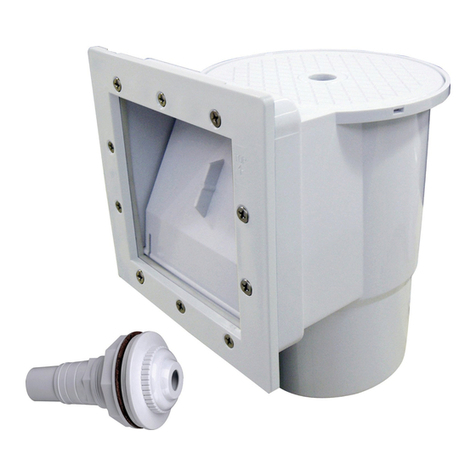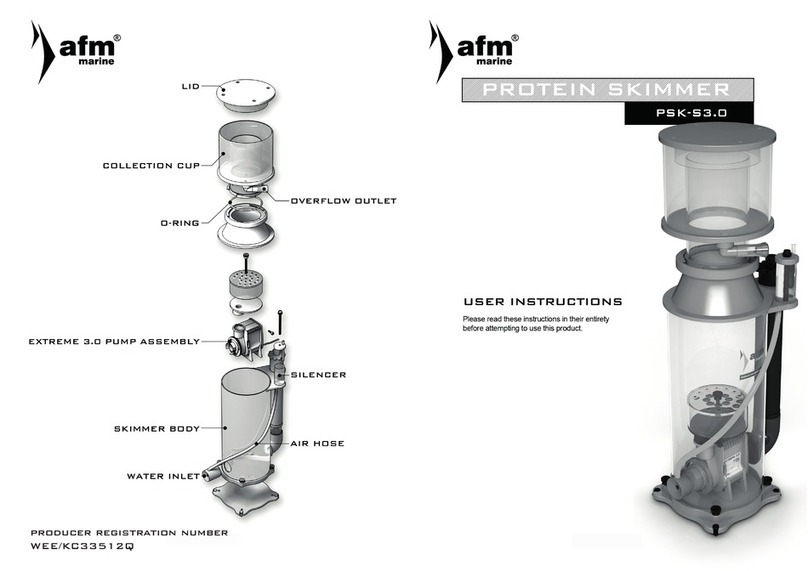
User Guide Oxymatic Basic
Rev.Apr 2013
Hydrover Water Solutions S..L.U.3
1. INTRODUCTION
1.1. Oxymatic Technology
The Oxymatic system generates the most powerful and effective disinfectant, it is one – two thousand times
faster to react and more effective than chlorine and lies a close second in power to fluoride which is forbidden
in recreational waters.
OXYMATIC combines two technologies: the hydrolysis of water and the electrolysis of copper. When the two
processes act in synergy water is automatically disinfected. Maintaining residual copper levels allows water to
be disinfected and ensures that the residual copper is more stable than chlorine. The process eliminates
anything that may cause irritation and eradicates any flavour or scent.
No additional disinfecting is required. Any legal requirements concerning levels of disinfectants within public
pools is no longer a concern as disinfected water runs through the system prior to chlorination/bromination,
thus eradicating potential problems
Automated installation and low maintenance cost
The methodology most commonly in existence relies on chemical disinfectants to prevent waterborne diseases
that can grow to epidemic proportions. Chlorination (water treatment method) has a proven ability to control
infectious diseases such as cholera, typhoid and dysentery. The use of disinfection with chlorine and chemicals
has proven useful and essential but not without cost. There is a high price to pay for the benefits of chemical
control not only financially but the side effects can be harmful: chlorine, bromine, aluminum, phosphates or
chromates etc. can cause harmful side effects on human health. Chlorine is coming under attack from health
organizations and federal governments are beginning to layout new legislation to minimize and eliminate the
use of toxic chemicals and disinfectants within water. The U.S. Registered Center for Disease Control
recognizes Chloroform and dioxin (two bi-products of chlorination) as toxic. Growing awareness and concerns to
the environment and human health due to the use of chlorine is forcing agencies to rethink the strategy and use
of chlorine, bromine and other halogens for all types of water treatment.
1.2. The process of hydrolysys
Hydrolysys is a Bipolar Oxidation Technology (A.B.O.T). It is referred as "bipolar" due to the fact that it has two
electrodes 1.the positive pole or anode, and 2. the negative or cathode.
Every four minutes there occurs an automatic change of polarity which allows the copper electrodes to operate
independently and intermittently whilst self cleaning.
Hydrolysis is the process by which the water molecule is dissociated into various species due to the application
of an electric current. The main reaction of the hydrolysis process is as follows:
2 H2O (OH-) + H3O+
The dissociation of water molecule implies a standard oxidation-reduction potential (E0) of 1.8 V. In the case of
pure water, the dissociation that is produced is very weak, so there must be a certain level of dissolved solids
and conductive molecules (corresponding to the TDS and conductivity parameters, respectively, in the routine
analysis of water) for this process to effectively act as a disinfectant.
There are many secondary chemical reactions, which produce ionic species with an oxidant and disinfectant
power, such as ozone (O3), monatomic oxygen (O1) and hydrogen peroxide (H2O2).
OXYMATIC circuits transform the standard electrical current (220 V, 50 Hz) DC low voltage and amperage by its
titanium electrodes (plated precious metals), creating ionized water, disinfectant chemical species.
The aforesaid results in the creation of a combination of the most powerful oxidizers available for water
disinfection, which avoids the use of chemicals. In the case of hydroxyl ions (oxidation-reduction potential of
2.05, exceeded only by fluorine, but because of its high toxicity can’t be used as a disinfectant).
Table 1 shows the key values of redox potential.

